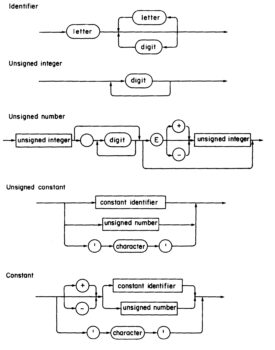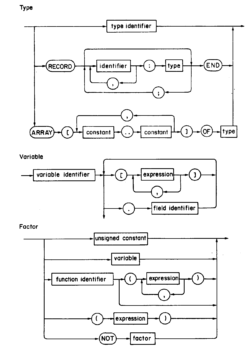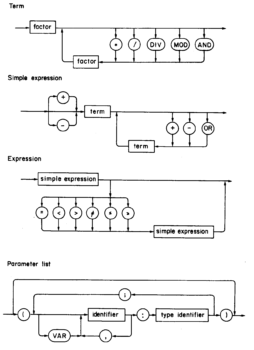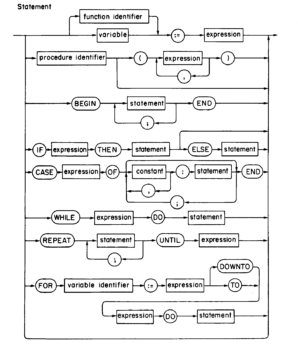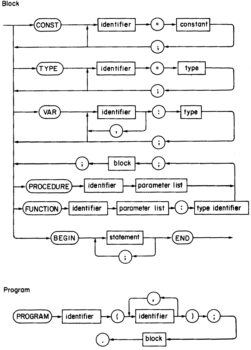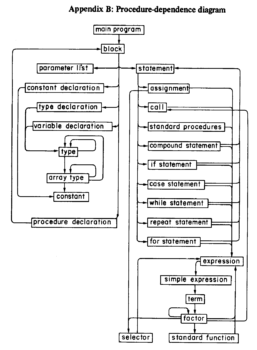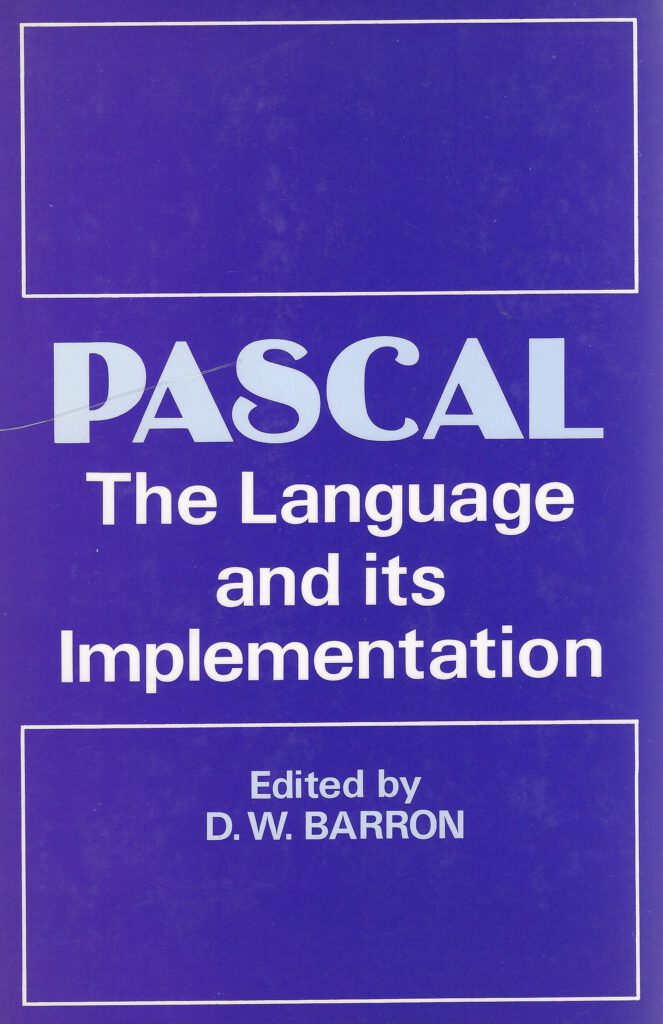The CDC 6000 compiler was used as the basis for several other compilers on other machines. When a Pascal implementor needed a compiler, he/she could use either the P4 source as a basis, or the CDC 6000 compiler, or write it from scratch. The reason you might prefer to use the machine specific CDC 6000 compiler as a starting point is that (unlike the P4 compiler) it was a full implementation of Pascal, without any features left off. It also was a full optimizing compiler.
Read this report written by Niklaus Wirth, On “PASCAL” Code generation, and the CDC6000 Computer, Stanford University, 1972
On this page listings from 1972, 1974, 1976 of the Zürich compilers and the surviving (1986) CDC 6000 compiler at Minnesota University.
The 1972 Compiler
The following listing was provided by John Reagan, currently Master Compiler Engineer at VMS Software, formally of Digital Equipment (DEC), Compaq and HP.
Main compiler code in Pascal
The 1972 Compiler was the last version of the original, unrevised Pascal language before Pascal reached the form most folks know as Standard Pascal. It is different in many ways, for example, there was no program header, write/ln and read/ln were considered CDC extentions to the language, dynamic pointers were introduced by a statement, and other differences.
The language of the compiler is described in the 1970 document, see the Articles page.
The method used to create the first Pascal compiler, described by U. Ammann in The Zurich Implementation, was to write the compiler in a subset of unrevised Pascal itself, then hand-translate the code to SCALLOP, a CDC specific language. The compiler was then bootstrapped, or compiled using the Pascal source code and the SCALLOP based compiler, to get a working compiler that was written in Pascal itself. Then, the compiler was extended to accept the full unrevised Pascal language.
The 1974 compiler
The following listings were scanned from listings provided by Bob Felts: CDC 6000 Pascal 3.4 Update 10 compiler.
Main compiler code in Pascal
Cross-reference
Runtime library code in Compass, the CDC 6000 assembly language
The 1974 compiler was the first of the revised compilers. That is, it was rewritten in the “revised Pascal” language that was the Pascal language we recognize today. The “Pascal-P implementation notes” imply that the compiler was Pascal-P ported specifically to the CDC 6000 series computer, and indeed the 1974 CDC Pascal compiler appears to match P2 better than any of the other compilers. As the CDC compiler was modified, it resembled Pascal-P less and less, which is natural.
The 1976 Compiler
The following listings were scanned from listings provided by Mr. John Dykstra.
Main compiler code in Pascal
Runtime library code in Pascal
Runtime library code in Compass, the CDC 6000 assembly language
An error translation routine
The compiler listing is dated 1976. The scans were taken from a listing direct from a CDC 6000 series computer, and bear some unique features to such a listing. The name and line number appears at the right of the listing. Because the listings were wider than a 8 1/2 inch sheet of paper the line numbers to the right have one or more digits cut off. This compiler comes from the revised Pascal that forms the basis of the Pascal User Manual and Report, second edition. The compiler source is not written in standard Pascal, nor would it have been even if the compiler had been written at the time of the standard. It uses several of the CDC 6000 specific extentions, and it has the generation of CDC 6000 machine instructions imbedded in it. It is a one piece compiler, it takes in Pascal on one end, and issues CDC 6000 object code out of the other. The layout of the compiler is similar to the P4 project, which is not an accident. The P4 system was derived from this compiler. The compiler was written in, and compiled for, the revised Pascal language that most of us think of as Standard Pascal. The documents that describe this are described on the Articles page.
U. Ammann described the creation of the revised compiler in The Zürich Implementation, The 1970 compiler (above) was rewritten completely to arrive at the revised Pascal compiler. This was done both because the new Pascal language was different, and also because the experience of writing the old compiler had suggested better code structure for the new compiler. The new compiler was written in unrevised, or 1970 Pascal code. This resulted in a compiler that compiled using the old compiler, but accepted the revised language Pascal. Then, the compiler code itself was hand translated to the new language, and translated by the new compiler that was compiled by the old compiler. This resulted in the new compiler running on itself, and thus a full bootstrap. Of course, at this point you might well wonder what hand translation of the first version of the source on the new compiler from unrevised to revised Pascal might mean, which U. Ammann does not go into. Basically, it is just what you do if the unrevised and revised languages are not quite compatible. Otherwise, if the unrevised compiler was a subset of the revised language, you could just recompile it without changes. This is not nearly as much of a project as translation to SCALLOP, and used in the first compiler. It just means changing to accommodate the differences in the languages, which were substantially similar.
The 1984 Compiler
The CDC compiler continued to evolve past 1976. Most of the changes in what is contained here as the 1984 compiler were made at the University of Minnesota by Dave Bianchi and Jim Miner (who appears as a reviser of the forth edition Pascal User manual and Report). The material contained is marked copyright, but the University of Minnesota has graciously granted permission for it to appear. The University of Minnesota group extended the implementation in a few ways, for example it contains the otherwise statement on case statements. Otherwise, it appears to be a straightforward implementation of the original Zürich compiler, and it continued to be run on the CDC 6000 series computers. The University of Minnesota implementation is important for several reasons:
- It contains the last known code revision of the CDC compiler.
- It is well documented.
- It is exists in machine readable and runnable form.
- It obeys, with compiler options, the ISO Pascal Standard.
Modification history – History of changes to the source.
Pascal compiler – The main compiler code
Pascal Include Generator – Program to process includes and error information.
Pascal Library – Contains runtime support library routines in Pascal.
Pascal Error Messages – Contains error messages in various languages.
Pascal Runtime Support – Contains Pascal runtime support in Compass, the CDC 6000 assembly language.
Pascal System Support -Contains the run time system in Compass, the CDC 6000 assembly language.
Pascal System Texts – Contains constants and macros used in the compiler, in Compass.
Note that the listings were created by a card listing program (as in punched cards), and have type and sequencing information at the right hand side. This information can be easily removed by clipping everything from column 75 on. It was retained here for historical purposes.
Note also that all of the sources appear in upper case text. The CDC computer native character instruction set only had one case of character.
The documentation files for the compiler:
Pascal-6000 Installation Handbook – Details how to install the release tape.
Pascal-6000 Internal Reference Manual – Overview of program internals.
Pascal-6000 Library Information – Details of the local library.
PASPLOT – a Pascal Plotting Package – Details of an applications package.
SUMMARY OF CHANGES TO PASCAL-6000 – As it says.surveys changes from the last to this release
Pascal-6000 Release 4 Upgrade Guide –
Prose Instruction Manual – Manual for Prose, a text formatter.
Pascal-6000 Writeup – The main users manual for the compiler.
Based upon a page and files supplied by by Scott A. Moore
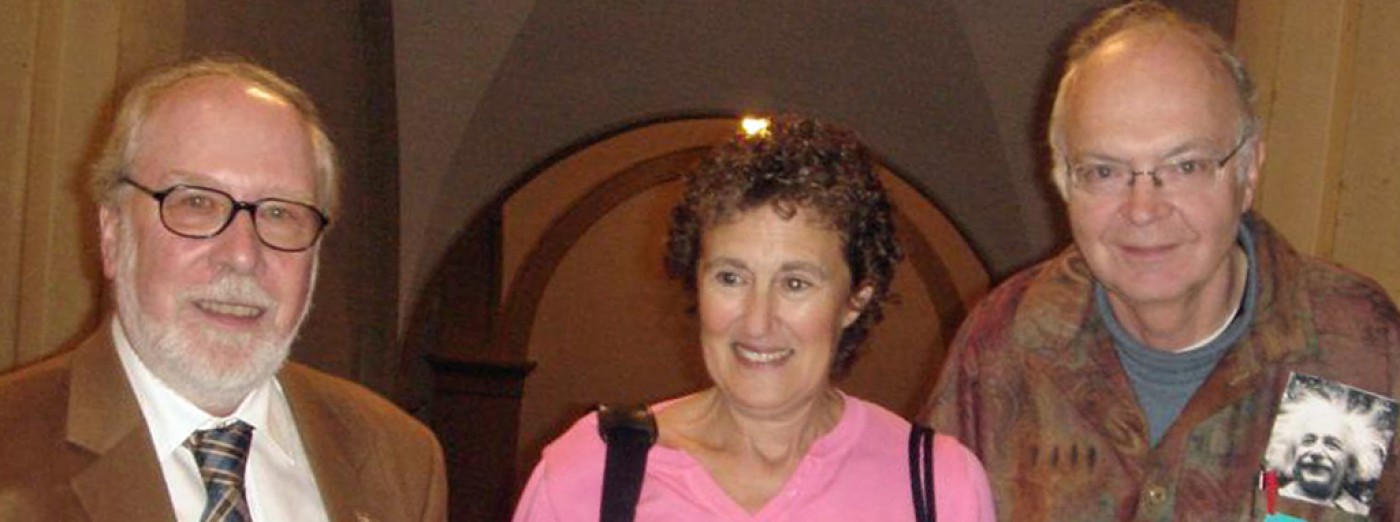
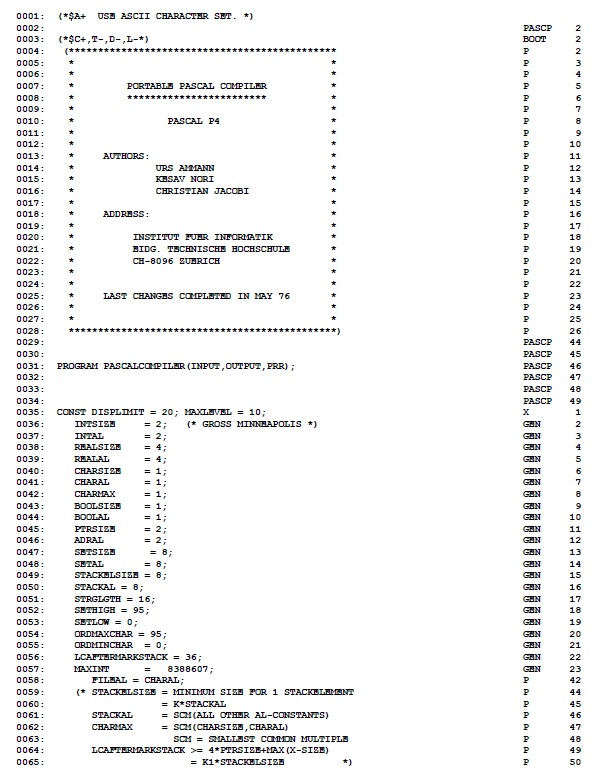
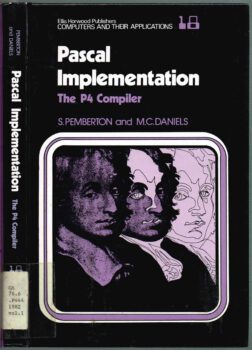
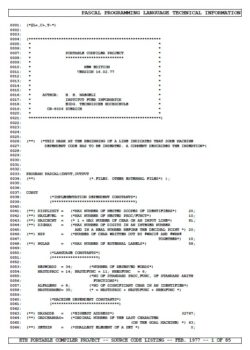
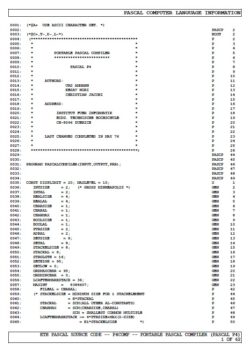
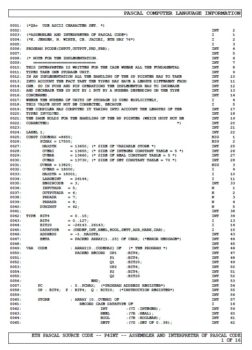
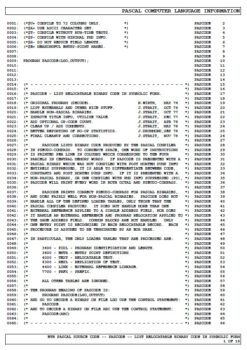
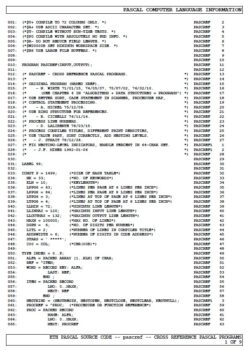
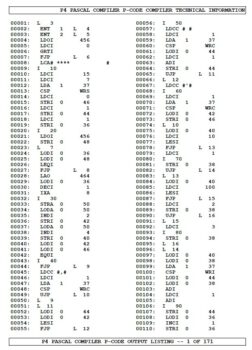
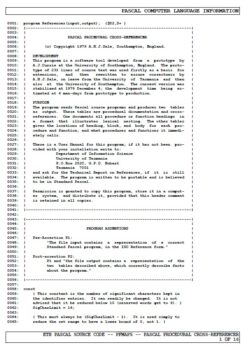
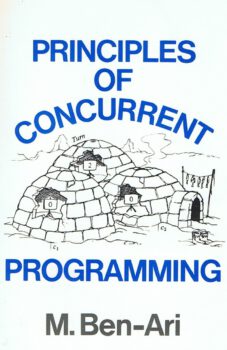
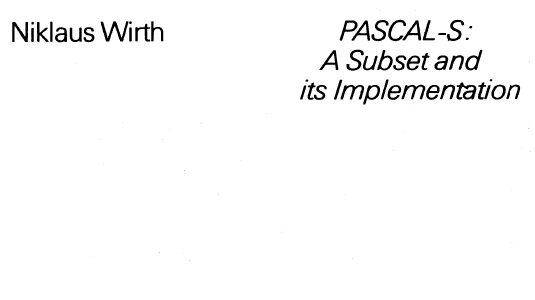
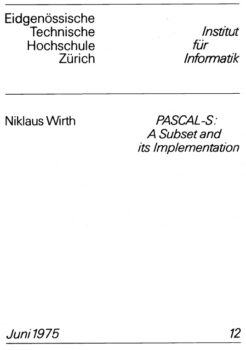 Pascal-S is a subset of Pascal selected for introductory programming courses. The implementation is especially designed to provide comprehensive and transparant error diagnostics and economical service for small jobs.
Pascal-S is a subset of Pascal selected for introductory programming courses. The implementation is especially designed to provide comprehensive and transparant error diagnostics and economical service for small jobs.